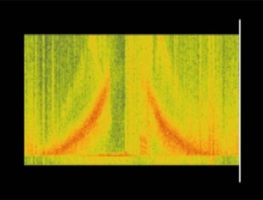OPEN CALL: Radio Killed The Video Star
Laboratorio 060 is a collective based in Mexico City. As part of an exhibition of this group at the Cue Foundation in New York, the group is launching a worldwide call for collaborations for a musical composition that will be learned and performed by the three members of this collective on the day of the opening and later transmitted on the radio in New York. The project Radio Killed the Video Star seeks to alter the homogeneous process by which entertainment is constructed and disseminated in our image-saturated media world. The ideal entries for collaboration should come from composers and musicians who may be interested in disseminating their work and in having their works interpreted by Laboratorio 060 –an artist collective without any professional musical experience— as part of this conceptual project. Entries should have three instrumental parts (instrument or voice) which can be interpreted by three individuals, and have a duration of no longer than five minutes. The proposals will be evaluated and the final composition will be selected by the guest curator of the exhibition.
Eligibility and Criteria
I. Any sound artist and/or composer of any genre is eligible to apply.
II. Special attention will be paid to those projects that take into consideration the specific context into which this performance will take place (an art space in Chelsea, and the radio)
III. Each participant may submit up to 2 entries.
IV. All compositions should be originated by the author. In case it is a collective work, there should be a designated representative for the group.
V. Participants may send submissions in either Spanish or English. If the composition has lyrics, these can be written in any language.
VI. By submitting their works, participants authorize the Cue Foundation and Laboratorio 060 to perform and present this work (either at the gallery, via radio or both) from March 13 to April 19 of 2008 at any given time, as well as show the documentation of their performance at this space.
VII. The authors of the submitted works will authorize the use of the composition and materials for publicity purposes. Authors will always retain copyright of the work. Laboratorio 060 will retain the rights of interpretation of this work without further authorization from the author. Participants will release the organizers of any copyright issue related to the submitted work.
VIII. The selection of the composition by the guest curator will be final.
IX. CUE Foundation does not search, nor actively promote the sale of any artworks. Nonetheless, if such agreement is reached between the author of the submitted work and Laboratorio 060, the resulting recording may be put for sale. In this case, 25 percent of the sale of this work will be directed to the CUE foundation and the remaining 75 percent will be divided between Laboratorio 060 and the author.
X. Participants accept the terms of this call for entries. Any unforeseen detail will be mediated and decided upon by the guest curator.
XI. The name of the author of the selected composition will be announced on the webpage of the CUE foundation (http://www.cueartfoundation.org) and on the webpage of Laboratorio 060 (http://www.lc060.org) on January 4, 2008.
XII. Selection criteria will include:
a) compositions with potential to infiltrate the radio in an effective and innovative way, b) works with an adequate balance between the three components,
c) works with an experimental and playful character, even if they have political content; d) non-commercial works.
XIII. The selected composition will be performed at the CUE Foundation on March 13, 2008 by the members of Laboratorio 060.
XIV. Whenever presented or advertised, the author of the work will be properly credited.
XV. The selected author of the work will receive 10% of the recordings produced.
Application process
XVI. All proposals should be submitted by regular mail to the following address:
CUE Art Foundation
Attn: Laboratorio 060
511 West 25th Street, Ground Floor
New York, NY 10001
XVII. Submission deadline will be December 21, 2007, at 6 p.m. (this is not a post-mark deadline).
XVIII. All works must be submitted with a musical score and an MP3 (CD) that may show an interpretation of the work.
Submissions will not be returned.
To receive acknowledgement of receipt, please include a self-addressed, stamped postcard. Do not call the CUE Foundation to seek acknowledgement of receipt.
Labels: Cue Foundation, open call radio art, radio art






